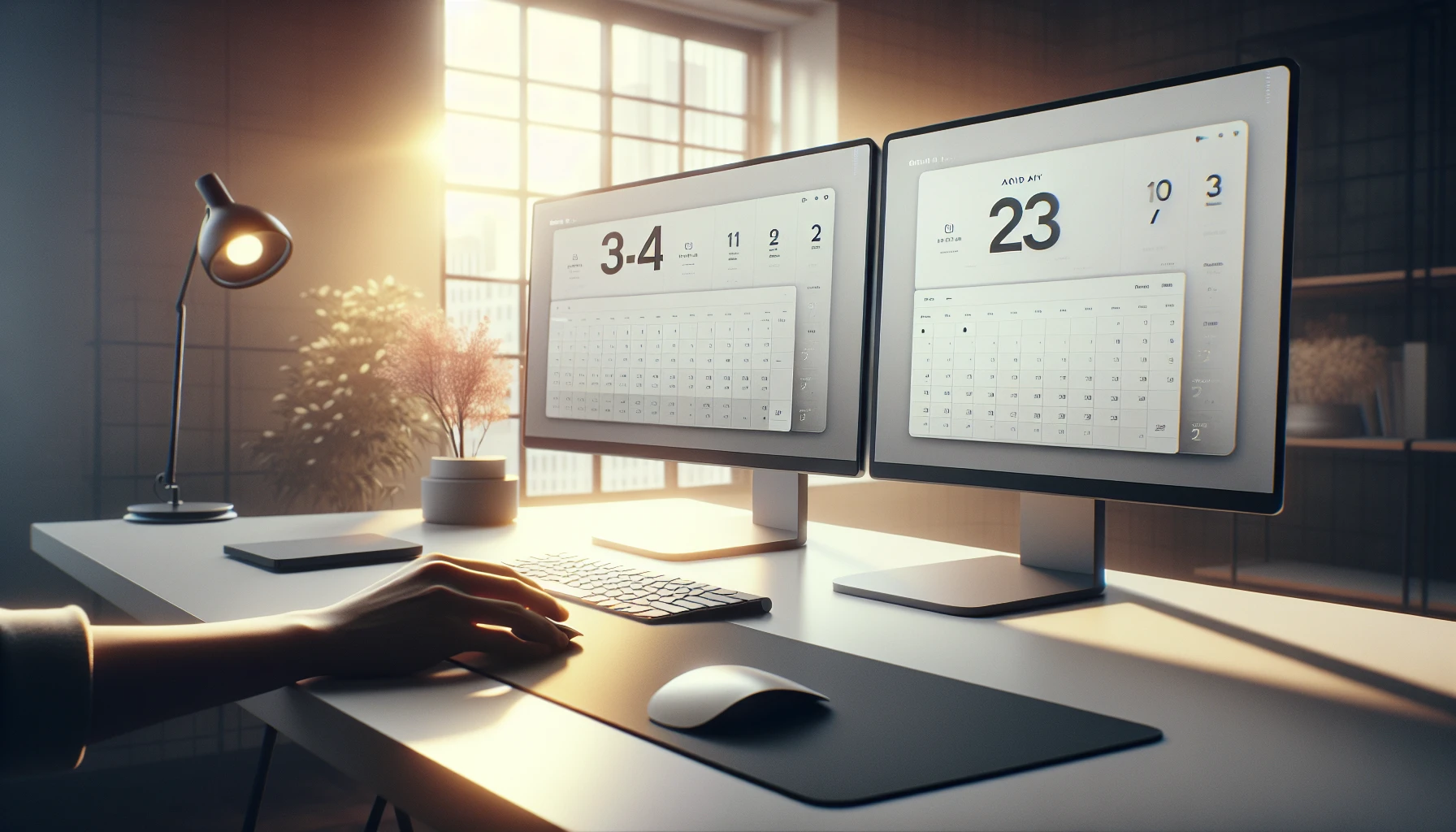· Ricardo Batista · 13 min read
Fix Google Meet Microphone Issues Easily
Learn how to troubleshoot microphone issues on Google Meet. Resolve common

Here’s the modified version of the content, following the provided instructions:
Key Takeaways
- Check physical connections and permissions for your microphone.
- Ensure browser and operating system settings are correctly configured.
- Update audio drivers to troubleshoot microphone issues effectively.
Introduction
Overview of Google Meet
Google Meet is a commonly-utilized video conferencing application developed by Google. It permits individuals to host & participate in virtual gatherings, rendering it an indispensable tool for remote employment, online education, & virtual social interactions. Offering capabilities like screen sharing, real-time captions, & integration with Google Calendar, Google Meet provides a seamless experience for users. Nevertheless, akin to any technology, it can occasionally encounter difficulties, such as issues with the microphone.
Common Microphone Issues
Mic troubles in Google Meet can be annoying, particularly when you need to communicate well during a gathering. Here are some common issues people face:
- Mic Not Recognized: Google Meet might not identify your microphone, stopping you from talking during the gathering.
- Muted Microphone: Sometimes, the microphone might be muted either in Google Meet or on your device.
- Quiet or Bad Sound: Though the mic is functioning, the audio quality could be terrible, making it hard for others to listen to you properly.
To resolve these issues, follow the steps below:
Check Microphone Settings in Google Meet:
- During a meeting, click on the three vertical dots in the bottom-right corner.
- Select “Settings” and then “Audio.”
- Ensure the correct microphone is selected from the dropdown menu.
Check Device Settings:
- On Windows, go to “Settings” > “System” > “Sound” and ensure the correct microphone is selected.
- On macOS, go to “System Preferences” > “Sound” > “Input” and select the correct microphone.
Update Drivers:
- Make certain your audio drivers are current. You can accomplish this via the Device Manager on Windows or by searching for updates on macOS.
- Browser Permissions:
- Make certain your web browser has authorization to get to the mic. In Chrome, click the lock symbol in the address bar & make sure the microphone is set to “Allow.”
- Use Meeting Reminders:
- Meeting Reminders could assist guarantee you don’t ever skip a gathering. It nudges participants when they aren’t appearing, saving you the trouble of manually messaging them. Simply set up the Google extension in your Google Calendar & let Meeting Reminders handle the remainder.
By following these actions, you can troubleshoot & resolve common mic problems in Google Meet, ensuring a smooth & productive meeting experience. For more detailed troubleshooting, you can refer to our Google Meets Camera Failed guide.
Initial Checks
Ensure Microphone is Connected
Before getting into more difficult fixing steps, it’s crucial to guarantee that your mic is appropriately linked to your gadget. Here’s how you can accomplish it:
- Physical Connection:
- In the event you’re utilizing an outside mic, guarantee it’s safely connected to the right port on your PC. For USB mics, ensure the USB link is immovably associated.
- For Bluetooth microphones, make certain they’re coupled & linked to your gadget. You can verify this in your device’s Bluetooth configurations.
Device Recognition:
- On Windows, go to “Settings” > “System” > “Sound” and check if your microphone is listed under “Input devices.”
- On macOS, go to “System Preferences” > “Sound” > “Input” and ensure your microphone is listed and selected.
Test the Microphone:
- On Windows, you can check your mic by navigating to “Settings” > “System” > “Sound” & clicking on “Test your microphone.”
- On macOS, head to “System Preferences” > “Sound” > “Input” & talk into your mic to check if the input level shifts.
Check Microphone Permissions
Sometimes, the difficulty could potentially stem from authorization privileges. Verify that your web browser & Google Meet possess the required permissions to gain access to your microphone device.
Browser Permissions:
- In Google Chrome, click on the padlock icon in the address bar when you are on the Google Meet page.
- Ensure that the microphone permission is set to “Allow.”
Google Meet Settings:
- During a Google Meet session, click on the three vertical dots in the bottom-right corner and select “Settings.”
- Go to the “Audio” tab and ensure the correct microphone is selected from the dropdown menu.
Operating System Permissions:
- On Windows, go to “Settings” > “Privacy” > “Microphone” and make sure that “Let programs use your mic” is turned on.
- On macOS, go to “System Preferences” > “Security and Privacy” > “Privacy” tab, pick “Microphone,” and make sure your browser is marked.
By following these initial checks, you can frequently resolve common microphone issues in Google Meet. If the difficulty continues, you might need to explore more advanced troubleshooting steps.
For a smooth gathering experience, think about utilizing Meeting Reminders. This tool notifies participants when they aren’t appearing, saving you the trouble of manually emailing them. Simply set up the Google add-on in your Google Calendar & let Meeting Reminders do the remaining work. For additional suggestions on overseeing virtual gatherings, look at our Virtual Meeting guide.
Browser-Specific Troubleshooting
Google Chrome
If you are using Google Chrome and experiencing microphone issues in Google Meet, follow these steps:
Check Microphone Permissions:
- Open Google Chrome and go to the Google Meet page.
- Click on the padlock icon in the address bar.
- Ensure that the microphone permission is set to “Allow.”
Clear Cache and Cookies:
- Click on the three vertical dots in the top-right corner.
- Go to “Settings” > “Privacy and security” > “Clear browsing data.”
- Select “Cookies and other site data” and “Cached images and files,” then click “Clear data.”
Update Chrome:
- Click on the three vertical dots in the top-right corner.
- Go to “Help” > “About Google Chrome.”
- Chrome will automatically check for updates and install them if available.
Mozilla Firefox
For Mozilla Firefox users, here are the steps to troubleshoot microphone issues:
Check Microphone Permissions:
- Open Firefox and go to the Google Meet page.
- Click on the padlock icon in the address bar.
- Ensure that the microphone permission is set to “Allow.”
Clear Cache and Cookies:
- Click on the three horizontal lines in the top-right corner.
- Go to “Options” > “Privacy & Security.”
- Under “Cookies and Site Data,” click “Clear Data.”
Update Firefox:
- Click on the three horizontal lines in the top-right corner.
- Go to “Help” > “About Firefox.”
- Firefox will automatically check for updates and install them if available.
Microsoft Edge
If you are using Microsoft Edge, follow these steps to resolve microphone issues:
Check Microphone Permissions:
- Open Edge and go to the Google Meet page.
- Click on the padlock icon in the address bar.
- Ensure that the microphone permission is set to “Allow.”
Clear Cache and Cookies:
- Click on the three horizontal dots in the top-right corner.
- Go to “Settings” > “Privacy, search, and services.”
- Under “Clear browsing data,” click “Choose what to clear.”
Update Edge:
- Click on the three horizontal dots in the top-right corner.
- Go to “Help and feedback” > “About Microsoft Edge.”
- Edge will automatically check for updates and install them if available.
Brave Browser
For Brave Browser users, here are the steps to troubleshoot microphone issues:
Check Microphone Permissions:
- Open Brave and go to the Google Meet page.
- Click on the padlock icon in the address bar.
- Ensure that the microphone permission is set to “Allow.”
Clear Cache and Cookies:
- Click on the three horizontal lines in the top-right corner.
- Go to “Settings” > “Privacy and security.”
- Under “Clear browsing info,” pick “Cookies & other website stuff” & “Saved images & files,” then tap “Clear info.”
- Update Brave:
- Click on the three horizontal lines in the top-right corner.
- Go to “Help” > “About Brave.”
- Brave will automatically check for updates and install them if available.
By adhering to these browser-specific troubleshooting techniques, you could fix microphone problems in Google Meet. For an even more streamlined meeting experience, think about utilizing Meeting Reminders. This tool notifies participants when they aren’t appearing, saving you the trouble of manually emailing them! Just install the Google add-on in your Google Calendar & let Meeting Reminders handle the rest. For additional advice on managing virtual gatherings, check out our Virtual Meeting guide.
Operating System-Specific Troubleshooting
Windows
If you are using Windows and experiencing microphone issues in Google Meet, follow these steps:
Check Microphone Settings:
- Go to “Settings” > “System” > “Sound.”
- Under “Input,” ensure the correct microphone is selected.
- Click on “Device properties” and test your microphone to ensure it is working.
Update Audio Drivers:
- Open “Device Manager” by right-clicking the Start button and selecting it from the menu.
- Expand the “Sound, video and game controllers” section.
- Right-click your audio device and select “Update driver.”
Microphone Privacy Settings:
- Go to “Settings” > “Privacy” > “Microphone.”
- Ensure that “Allow apps to access your microphone” is turned on.
- Scroll down and ensure that your browser (e.g., Chrome, Firefox) is allowed to access the microphone.
macOS
For macOS users, here are the steps to troubleshoot microphone issues:
Check Sound Settings:
- Go to “System Preferences” > “Sound” > “Input.”
- Ensure the correct microphone is selected and the input volume is set appropriately.
- Speak into your microphone to see if the input level moves.
Microphone Privacy Settings:
- Go to “System Preferences” > “Security & Privacy” > “Privacy” tab.
- Select “Microphone” from the list on the left.
- Ensure that your browser (e.g., Safari, Chrome) is checked.
Reset PRAM/NVRAM:
- Shut down your Mac.
- Turn it on and immediately press and hold Option + Command + P + R for about 20 seconds.
- Release the keys and let your Mac restart.
Linux
For Linux users, here are the steps to troubleshoot microphone issues:
Check Sound Settings:
- Open the “Settings” application.
- Go to “Sound” and ensure the correct input device is selected.
- Test your microphone to ensure it is working.
PulseAudio Volume Control:
- Install PulseAudio Volume Control if it is not already installed (
sudo apt-get install pavucontrol). - Open PulseAudio Volume Control and go to the “Input Devices” tab.
- Ensure the correct microphone is selected and the input volume is set appropriately.
- Install PulseAudio Volume Control if it is not already installed (
Check Browser Permissions:
- Open your browser and go to the Google Meet page.
- Ensure that the microphone permission is set to “Allow.”
By adhering to these operating system-specific troubleshooting techniques, you can address microphone problems in Google Meet. For an enhanced meeting experience, contemplate utilizing Meeting Reminders. This utility notifies participants when they fail to show up, sparing you the inconvenience of manually emailing them. Merely install the Google add-on in your Google Calendar & let Meeting Reminders handle the remainder. For additional pointers on managing virtual gatherings, review our Virtual Meeting guide.
Advanced Troubleshooting
Update Audio Drivers
Updating your audio drivers can resolve many microphone issues. Here’s how to do it:
Windows:
- Open “Device Manager” by right-clicking the Start button and selecting it from the menu.
- Expand the “Sound, video and game controllers” section.
- Right-click your audio device and select “Update driver.”
- Choose “Search automatically for updated driver software” and follow the prompts.
macOS:
- macOS updates frequently incorporate driver updates. Proceed to “System Preferences” > “Software Update” & install any accessible upgrades.
- Linux:
- Utilize the terminal to modernize your drivers. For instance, on Ubuntu, you are able to employ the command
sudo apt-get update & sudo apt-get upgrade.
Check for Conflicting Applications
Sometimes, other applications might be using your microphone, causing conflicts. Here’s how to check and resolve this:
Windows:
- Open “Task Manager” by pressing Ctrl + Shift + Esc.
- Go to the “Processes” tab and look for applications that might be using the microphone (e.g., Skype, Zoom).
- Right-click the conflicting application and select “End task.”
macOS:
- Open “Activity Monitor” from the Applications > Utilities folder.
- Look for applications that might be using the microphone.
- Select the application and click the “X” button to quit it.
Linux:
- Use the terminal to list running processes with the command
ps -aux. - Identify and kill the process using the command
kill [PID], where [PID] is the process ID.
- Use the terminal to list running processes with the command
Use External Microphone
If your built-in microphone is not working, consider using an external microphone. Here’s how to set it up:
Connect the Microphone:
- Plug the external microphone into the appropriate port (USB or 3.5mm jack).
Select the Microphone in Settings:
- Windows: Go to “Settings” > “System” > “Sound” and select the external microphone under “Input.”
- macOS: Go to “System Preferences” > “Sound” > “Input” and select the external microphone.
- Linux: Open the “Sound” settings and select the external microphone under the “Input” tab.
By adhering to these sophisticated troubleshooting procedures, you have the ability to rectify persistent microphone complications in Google Meet. For an enhanced meeting encounter, contemplate utilizing Meeting Reminders. This instrument notifies participants when they are not appearing, sparing you the inconvenience of manually emailing them! Simply set up the Google add-on in your Google Calendar & permit Meeting Reminders to handle the remainder. For additional guidance on overseeing virtual gatherings, inspect our Virtual Meeting manual.
Additional Resources
Google Meet Help Center
The Google Meet Assistance Hub is an outstanding asset for resolving problems & gaining deeper knowledge about Google Meet. It provides a thorough compilation of articles, manuals, & frequently asked inquiries that encompass a vast array of subjects, including microphone difficulties. To utilize the Assistance Hub:
- Visit the Google Meet Help Center: Navigate to the Google Meet Help Center.
- Look for Your Difficulty: Utilize the search bar to enter keywords connected to your issue, like “mic isn’t functioning properly.”
- Follow the Guides: Browse through the search results and follow the step-by-step guides provided.
Community Forums
Community forums are a valuable asset for locating answers to particular difficulties & connecting with other individuals who might have encountered comparable problems. Google Meet possesses an energetic community where users exchange advice & solutions.
- Visit the Google Meet Community Forum: Go to the Google Meet Community Forum.
- Search for Your Issue: Use the search bar to find threads related to your microphone issue.
- Ask a Query: In case you cannot discover a fix, think about posting your inquiry. Make certain to give thorough data about your issue to get the most ideal assistance.
Professional Support
- Google Workspace Assistance: In case you’re utilizing Google Workspace, you are able to get expert help via your admin panel.
- Contact Google Support: Visit the Google Support page and follow the instructions to contact support directly.
For a more productive gathering experience, contemplate utilizing Meeting Reminders. This utility notifies participants when they aren’t appearing, saving you the inconvenience of manually emailing them. Merely set up the Google extension in your Google Calendar & let Meeting Reminders handle the remainder. For additional suggestions on overseeing virtual gatherings, review our Virtual Meeting guide.
Conclusion
In conclusion, fixing mic troubles on Google Meet can be a simple process if you follow the correct steps. By making sure your mic is properly linked, checking browser & operating system settings, & updating audio drivers, you can solve common issues that may happen during virtual meetings. Remember to use resources like the Google Meet Help Center for more support & guidance. With these troubleshooting methods at your disposal, you can improve your Google Meet experience & ensure smooth communication in your virtual meetings. Stay connected & productive with these simple yet effective solutions.
Conclusion
Frequently Asked Questions (FAQs)
Why is my microphone not working on Google Meet?
There might be a couple of reasons why your mic isn’t functioning on Google Meet! It could be because of a hardware problem, wrong settings, or browser permissions. Follow our troubleshooting guide to fix the issue:
How can I check if my microphone is properly connected?
To check if your mic is properly connected, make sure that it is securely plugged into your device. You can also try your mic on other apps to see if it is functioning properly.
Does Google Meet have built-in microphone settings?
Yes, Google Meet permits you to modify your mic preferences throughout a gathering. You can pick your microphone, change the volume, & test your audio prior to joining a call.
Are there browser-specific issues that can affect microphone functionality on Google Meet?
Yes, web browser configurations & authorizations could influence microphone capability on Google Meet. Ensure to inspect your web browser setups & grant required permissions for Google Meet to get to your mic.
Should I update my audio drivers to fix microphone issues on Google Meet?
Modifying your sound operators could assist in resolving mic troubles on Google Meet. Old drivers might lead to compatibility concerns, so it’s advisable to keep them current for ideal functionality.



